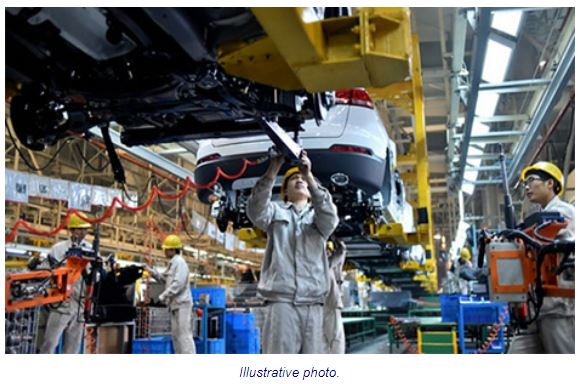Vietnam targets GDP growth rate of 6.6 – 6.8% in 2019
Additionally, the country expects export turnover to increase by 7 – 8% and keep trade deficit below 3%, Trung said at a meeting on October 9.
In 2019, total social investment would account for 33 – 34% of GDP, while the average CPI is projected to reach around 4%, Trung informed.
Vietnam’s labor force (from the age of 15 upwards) would be around 55.9 million, up 1.97% year-on-year, state budget revenue of VND1,411 trillion (US$60.57 billion), up 7% year-on-year. Meanwhile, Vietnam’s budget expenditure is expected at VND1,633 trillion (US$70.10 billion), up 7.2% year-on-year, resulting in a budget deficit of VND222 trillion (US$9.53 billion), or 3.6% of GDP.
Vu Hong Thanh, chairman of the National Assembly’s Economic Committee, said the country should pay attention to priorities that would help Vietnam reach the said GDP target in 2019.
According to the Ministry of Planning and Investment (MPI), driving forces for economic growth in 2018 come from both supply and demand sides, as well as added capabilities of sectors and industries.
Some experts at the meeting attributed a major part of Vietnam’s positive economic growth in 2018 to Samsung and Formosa.
Thanh expressed concern that contribution of Samsung and Formosa to Vietnam’s economy would be the same in 2018, while the agriculture sector growth is set to reach its peak at 3.31% this year. As the same is applied to the service sector, Thanh raised the question of what would be the driving force for growth in 2019.
The MPI stated that Vietnam’s economic outlook in 2019 would maintain its growth momentum, thanks to positive global economic prospect and internal strengths, including stable macro-economic conditions, improved business and investment environments, and the status of a middle-income country.
Moreover, the MPI pointed out challenges from within the economy, such as low technologies, advantages of natural and land resources being gradually diminished, no breakthrough in productivity and competitiveness, especially when Vietnam’s comparative advantages are fading.
Next year, Vietnam is expected to open local market wider to foreign investors, reduce import tariffs and tighten intellectual property management as part of its global commitments. The move would bring more opportunities to attract foreign capital, but at the same time put more pressure on domestic enterprises, the MPI noted.
Vietnam’s nominal GDP in 2018 is forecast to grow over 6.7% to reach VND5,555 trillion (US$240.5 billion), leading to GDP per capita of US$2,540, up 6.3% year-on-year or US$155, the MPI predicted.


 English
English




